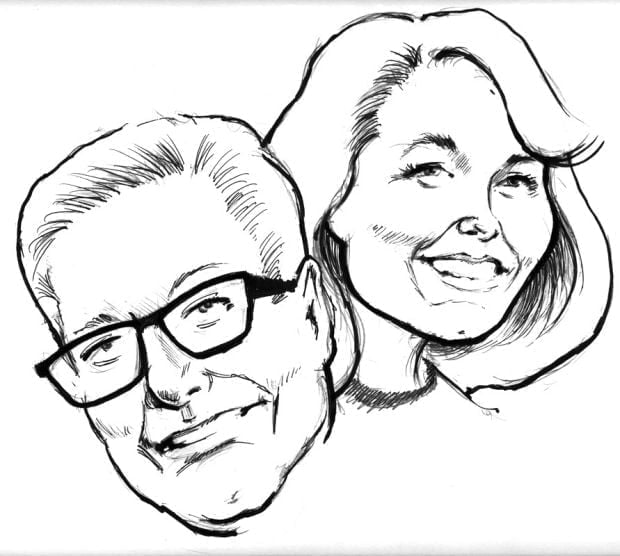
TOM: “Gone with the Wind,” or “GWTW,” was a sensation in 1939 and continues to be regarded as one of the greatest American films. “GWTW” depicts the coming of age of wilful Georgia plantation belle Scarlett O’Hara (Vivien Leigh), whose idyllic life is turned upside down when Sherman’s army storms Atlanta. Above all, this is a great human story, set against the backdrop of war.
SARAH: This story line works because of great characters and their qualities. The central characters present a stark contrast, as the female leads are polar opposites. Scarlett is this force of nature, the reckless center of her own universe; Melanie (Olivia de Havilland) is more subdued and reserved. Scarlett is focused on self-preservation, getting whatever she wants by whatever means necessary, while Melanie is intuitive, empathetic and selfless.
TOM: Then you have the male leads: dashing blockade runner Rhett Butler (Clark Gable) and Confederate officer Ashley Wilkes (Leslie Howard), the rivals for Scarlett’s affection. From the moment Gable appears on the screen, he fully inhabits the role, and it’s hard to imagine anyone else as Rhett. Rhett is in many respects the counterpart of Scarlett—reckless, heedless of convention and selfishly seeking to make a fortune off the war. Yet Scarlett sets her sights on the comparatively dull and dutiful Ashley. I guess opposites attract!
SARAH: Clark Gable is so different from any actor in the 21st century. His persona—and his aura—are a powerful presence throughout the film. His involvement in this film was vital, and his charisma paired with that of Vivien Leigh made them a dynamic duo. Gable’s Rhett is extremely complex. He puts on the façade of a careless rebel, but the audience knows how much he truly cares for Scarlett. She is totally oblivious to his expressions of love, and he resorts to hiding his vulnerability from her by bluff humor.
TOM: Scarlett and Rhett are never in sync. Although there is clearly affection on both sides, they seem fated never to express it at the same time. For that reason, I find parts of the second half of the film a bit melodramatic. Another thing that really strikes me in watching “GWTW” today is the portrayal of African Americans. Do you realize that the film premiered in 1939, which is actually closer to the end of the Civil War (1865) than to the present day? It presents a sentimental view of the antebellum South, and an uncritical view of slavery. There are scenes where the African American characters are presented as caricatures, as comic relief.
SARAH: That’s true, except for the character of Mammy (Hattie McDaniel). Mammy is a very well-rounded, real character that one can relate to. She is a realist who is able to see the true nature of those around her, but she still manages to show compassion. I think that it is really awesome that she won an Academy Award for her portrayal.
TOM: We can’t discuss “GWTW” without acknowledging the phenomenal production values.
SARAH: Everything comes together to make this a real classic: the writing, the fashions, sets, camera work, editing and wonderful actors. The cinematography is very distinctive, with vibrant colors and beautifully painted backdrops. The scale of the production is immense and overwhelming with vast scenes that captivate the viewer – all without CGI. Particularly memorable is the scene where the camera focuses on Scarlett walking through acres of wounded and dying soldiers, and pulls back to reveal thousands of bodies, showing the magnitude of suffering.
TOM: I still remember the first time I heard the opening notes of Max Steiner’s terrific score. The music takes the film to another dimension. Do you have any final thoughts?
SARAH: At the heart of this picture are two females, Scarlett, sassy and egocentric, and Melanie, humble and benevolent. To me, the female characters represent strength of will and independence from the male-dominated society of which they were a part. Both represent strong responses to patriarchal dominance and conventional thinking. “GWTW”’s strong female stars are prominent examples that empower many young women. These days, you do not see enough films that feature such compelling and robust women, and that needs to change